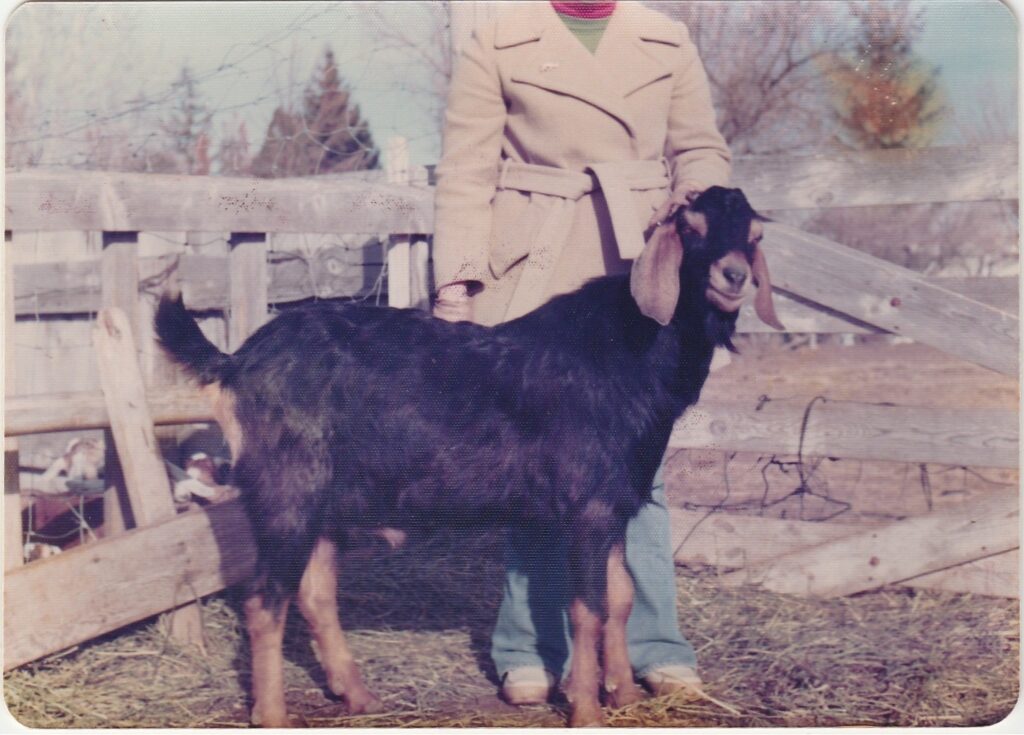
IN THE BEGINNING
Those of you who only know Sam and me from our Imnaha Nubian herd, probably don’t know that this is our second go-round with goats. We first started out over 40 years ago, a year or so after we got married (1974?), when we bought our first farm just outside the town of Union, Oregon—not far from where Stephanie Rovey currently has Grande Ronde Dairy.
We bought a lovely two-acre farmstead that had a cute turn of the century farmhouse, a rustic barn, and was mostly in pasture. I had just graduated from college, and both of us were in our hippie farmer phase at that time. Fortunately for us, we weren’t completely at sea, since I’d grown up on a farm with Jersey cows, chickens, and a huge garden, and Sam’s folks had managed a ½-acre garden where they lived inside La Grande’s city limits.
Naturally, once we planted the garden and bought our chickens, we started thinking about milk. Having been around cows for much of my life, I was not excited about getting a cow. Don’t get me wrong, I don’t “hate” cows, but there are “cow people” and there are “goat people.” There are probably also “cow and goat people,” but I was not one of them. I knew very well how much work a milk cow would be, plus the fact that it would provide far more milk than we needed, and cows can be notoriously difficult to handle on your own. I learned that first-hand as a kid growing up, because rounding up the dairy cows and bringing them home for milking was my job. Add to that the fact that neither of us had ever seen a goat in our entire lives, outside of National Geographic–but we decided a cute little goat or two would be just what we needed, so we set about trying to find one.
Northeastern Oregon in the 1970’s was not “goat country,” and it still isn’t. We didn’t know anyone who had goats, let alone any for sale! At last, we saw an ad in the local paper advertising a grade milk goat for sale in the neighboring county, so we called and made an appointment to come and see her—and since it was a 100-mile or so trip, we figured we’d be bringing the goat home.
That’s how we met our friends Jim and Dolly Anderson (Whip’porwil Saanens and Alpines), then of Enterprise, Oregon. We bought the little grade Saanen doe, whom we named Sally, and took her home. She was a dry yearling at that time, so we arranged to bring her back in a few months to be bred. Yay, another long drive with the goat! It was okay, though, because Sally was a very cute, quiet, sweet little doe. We knew so little about goats that we didn’t even know she needed to have a companion. Lucky for us, Sally seemed perfectly happy all by herself. I wasn’t working at the time, so I made up for the lack of companionship, at least during the day. We set her up in a stall in the barn, and she made herself at home.
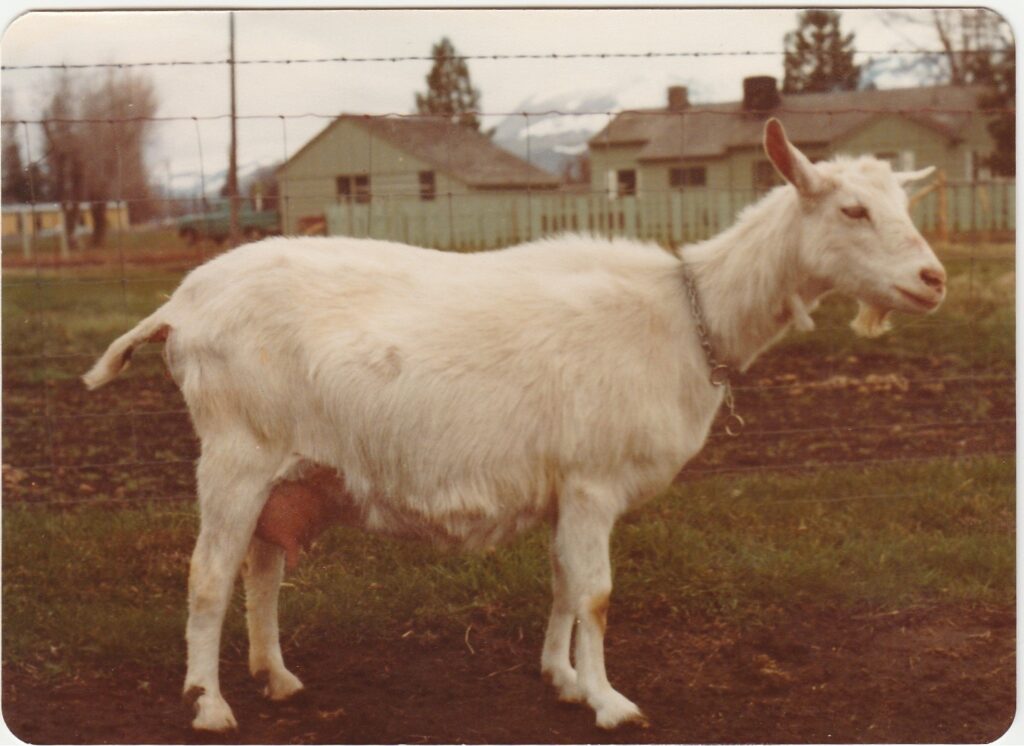
Before we knew it, Sally dutifully came into heat, so we hauled her back to Andersons to be bred, hopefully to their beautiful purebred Saanen buck. We noticed they had a big Nubian buck, too. He was named Coco (he was a registered purebred Nubian, named High C Cocolassal #N191708), and we should’ve gotten a clue from the fact that he was dragging a log around at the end of a length of chain. It seems he was a confirmed jumper, and that was the only way they could stop him from jumping in with the does and breeding all of them. Why they had him, I don’t know, since all their other goats were Saanens or Alpines.
Fast forward a few months to spring, and Sally gave us beautiful triplet doelings in an uneventful birth. There was one problem, though. They were cute kids, all right, but one was where were the lovely upright ears, like their mom’s? No, they airplane ears! We figured out that, even though she had been bred to the Saanen buck, somehow, even dragging that log around, Cocoa had managed to do the deed. It was okay. The kids were so cute, it didn’t really matter, and Sally had a gorgeous udder. We didn’t even have trouble selling the kids when the time came.
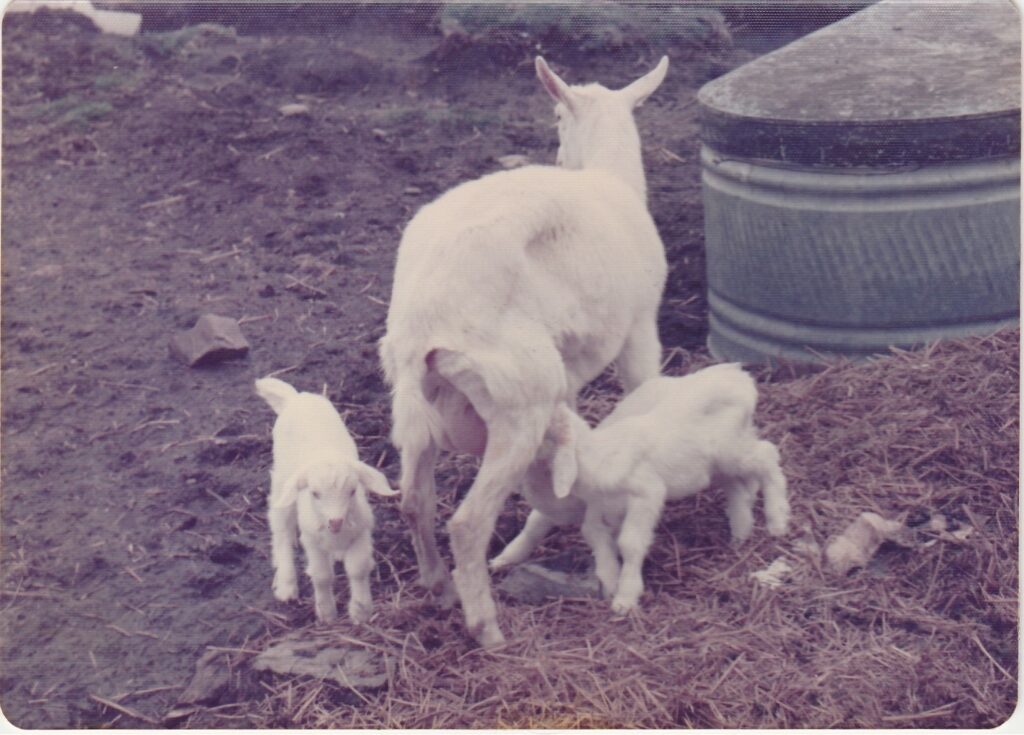
At last, I was ready to milk my goat—or so I thought. Ha-ha, Sally had other ideas. Sam had cobbled together a milking stand of sorts in another area of the barn, designated “the milking parlor,” and I had accumulated various milking equipment the library books told me I needed. The only milk pail I could find was a huge cow-size milking pail, and I also had a cow-sized milk strainer, which I stuck on a glass gallon jar to strain into. Every time I tried to squeeze Sally’s teats for a squirt of milk, she kicked and put her foot in the bucket. Squeeze, kick. Squeeze, kick. It was hilarious; except I wasn’t getting very much. I’m no quitter, though, so I persisted. We struggled through, and the next time did go more smoothly. Sally was a pretty smart goat, so she figured it out. Before I knew it, I was milking like a pro and had oodles of milk for making yogurt and cheese! I was on my way.
Since we wanted to avoid yet more long-distance driving to Sally’s boyfriend’s house the next year, we bought Coco. We ended up buying a purebred, polled Saanen buck and doe from some other folks who were getting out of goats, too. By this time, we were getting a fair number of them, and after making our best offer to (unsuccessfully) buy the 3 acres next to the little farm we owned, we decided to look for a bigger place and sold the farm. That’s when we moved to Summerville, Oregon, at the other end of the Grande Ronde Valley and became the Sheng Tai herd.
FROM UNION TO SUMMERVILLE
The move from Union, Oregon to our new home in Summerville was far from painless. Our little farm sold two days after we listed it on the market, so we had to clear out pronto—BUT we didn’t have anywhere to go! We had planned on looking for a new place while waiting for the farm to sell, but as luck would have it, the new owners wanted to move in right away. What to do? We found a used Airstream camp trailer for sale that was in really nice shape, and the rancher who owned it said it would be all right for us to camp on his place with our handful of goats for a couple months while we searched for a place to buy. Sweet! After a brief search, we bought our place on Findlay Creek a few miles out of Summerville and moved onto it. It was fenced, had a well, electrical service, and we contracted to have a gravel drive put in up to where the Airstream would be parked until we could build a house. There were no outbuildings, but it was summer, and Sam put up hot wire fence to corral the goats.
Along the way, we learned LOTS about what goats to buy–and what kind not to. We’ve bought our share of the latter, which in all fairness to them, were sweet animals just trying to do their best. It wasn’t their fault they didn’t have what it took to excel. The little grade Nubian pictured below was such a sweetie, and I literally cried when she freshened. Here are a couple sweet does that show you what not to buy:
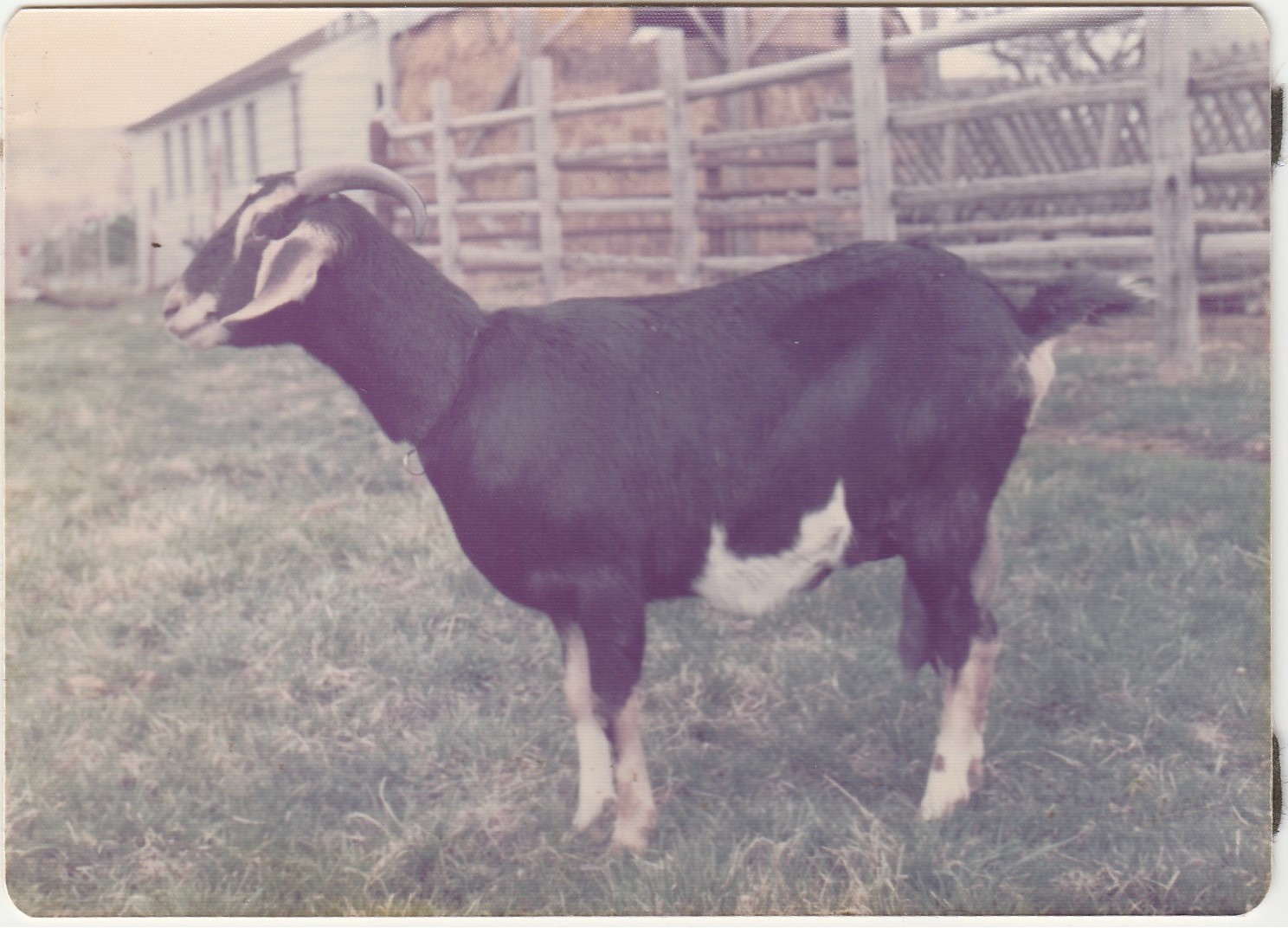
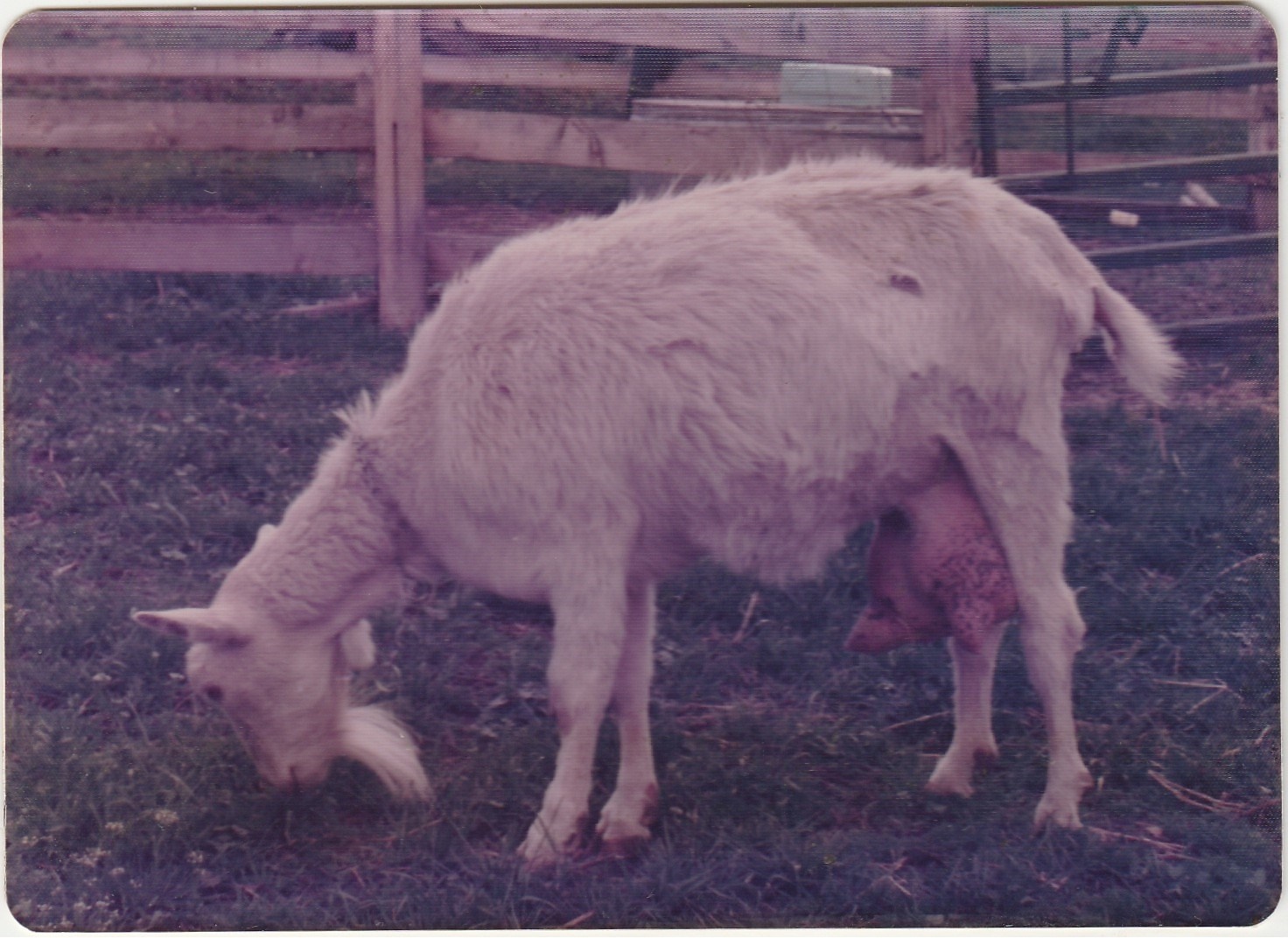


Not long after arriving in Summerville, we decided to add Nubians to the picture. We had sold Coco to somebody before our move, but as much as we loved our Saanens (and they still are my second favorite breed). Nubians had stolen our hearts. It’s hard to do justice to two or more breeds simultaneously, though. We also decided it was time to have purebreds, since we were now interested in more than just milking them. I saw an ad in Dairy Goat Journal for a herd in the Boise, Idaho area, so we arranged to visit John Robinson’s Jumna Pari herd.
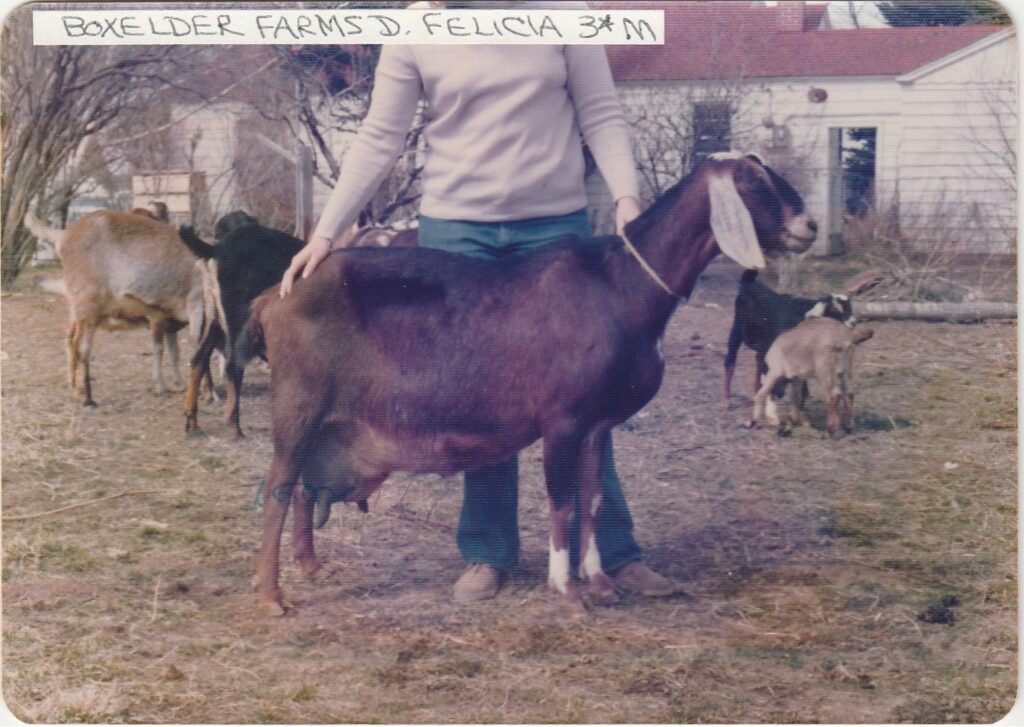
I will never forget that visit! John and his family were so gracious, and we were surrounded by hordes of WONDERFUL Nubians. Heaven must be a little like that. One doe in particular made a lasting impression on me: Boxelder Farms D. Felicia[i]. I had never seen such a beautiful doe, and I know the picture I have of her in my mind represents much of what I still look for in my ideal Nubian doe. Of course, she wasn’t for sale at the time, nor were any of her offspring, but we did find a cute buck and doe kid which we brought home: Jumna Pari Mr. Barnaby[ii] and Jumna Pari Miss Teardrops[iii].
Over the years we added many animals. Some were fabulous, and some were not so much. Mostly not so much, but we gradually learned what to look for and what to avoid. The real turning point came, however, when we met Ms. Frances Townley and her two Nubian does, Hy-Wind Lace and River Queen. Frances pioneered packing with her goats when she lived in California, and she even appeared with one of her does on The Jack Paar Show a few years before his show became The Tonight Show with Johnny Carson. I can remember her telling us the story about that experience, and how her doe went up on the elevator and back down again and never once made a mess. Frances needed someone to care for her does and her garden while on her annual salmon fishing jaunt to Alaska. That trip was a fateful one for Frances, as she sadly discovered she could no longer carry on with life as she always had. Not long after she returned home, Frances decided to give up trying to keep her goats, so we agreed to keep them for her and eventually bought them.
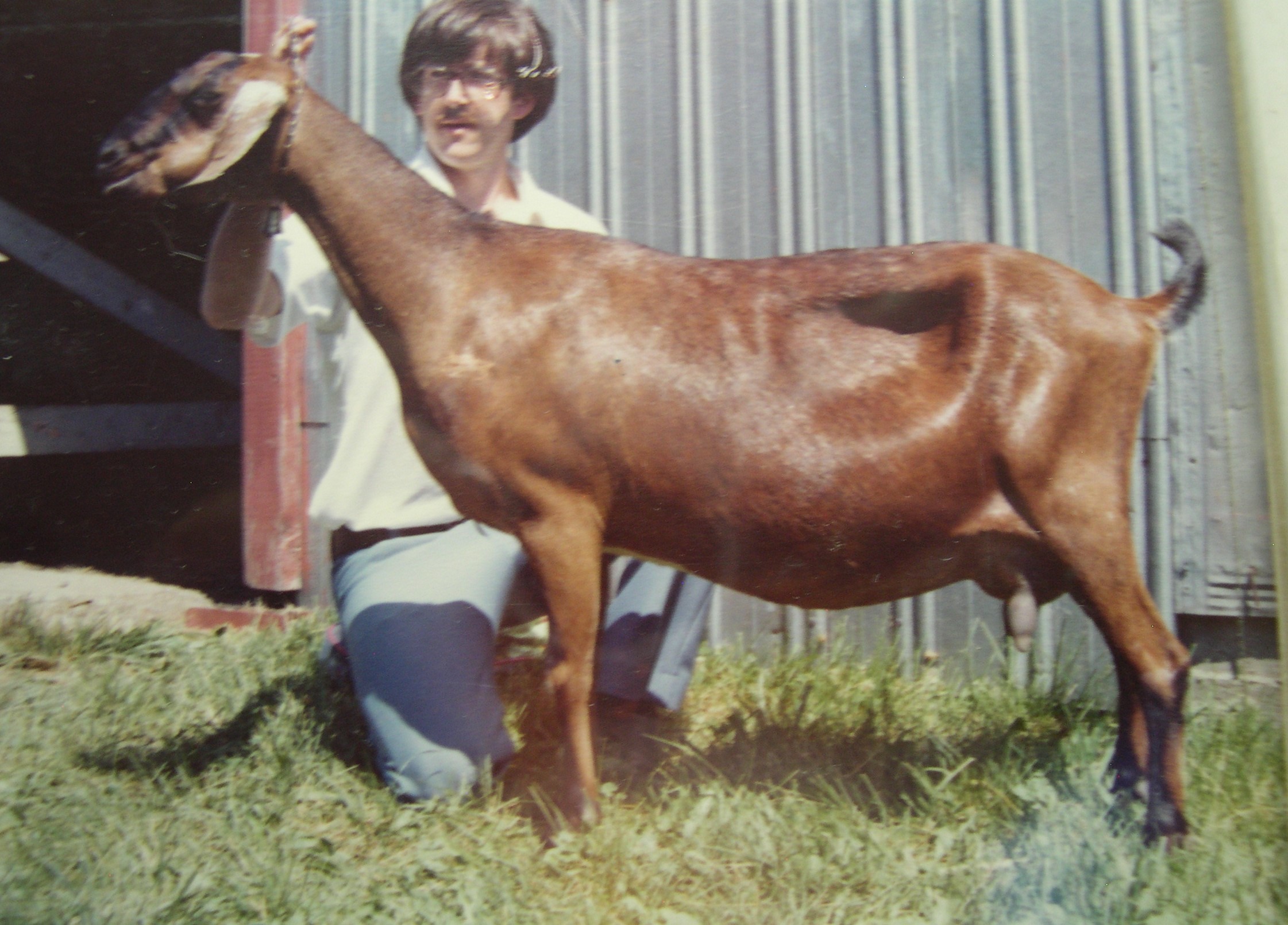
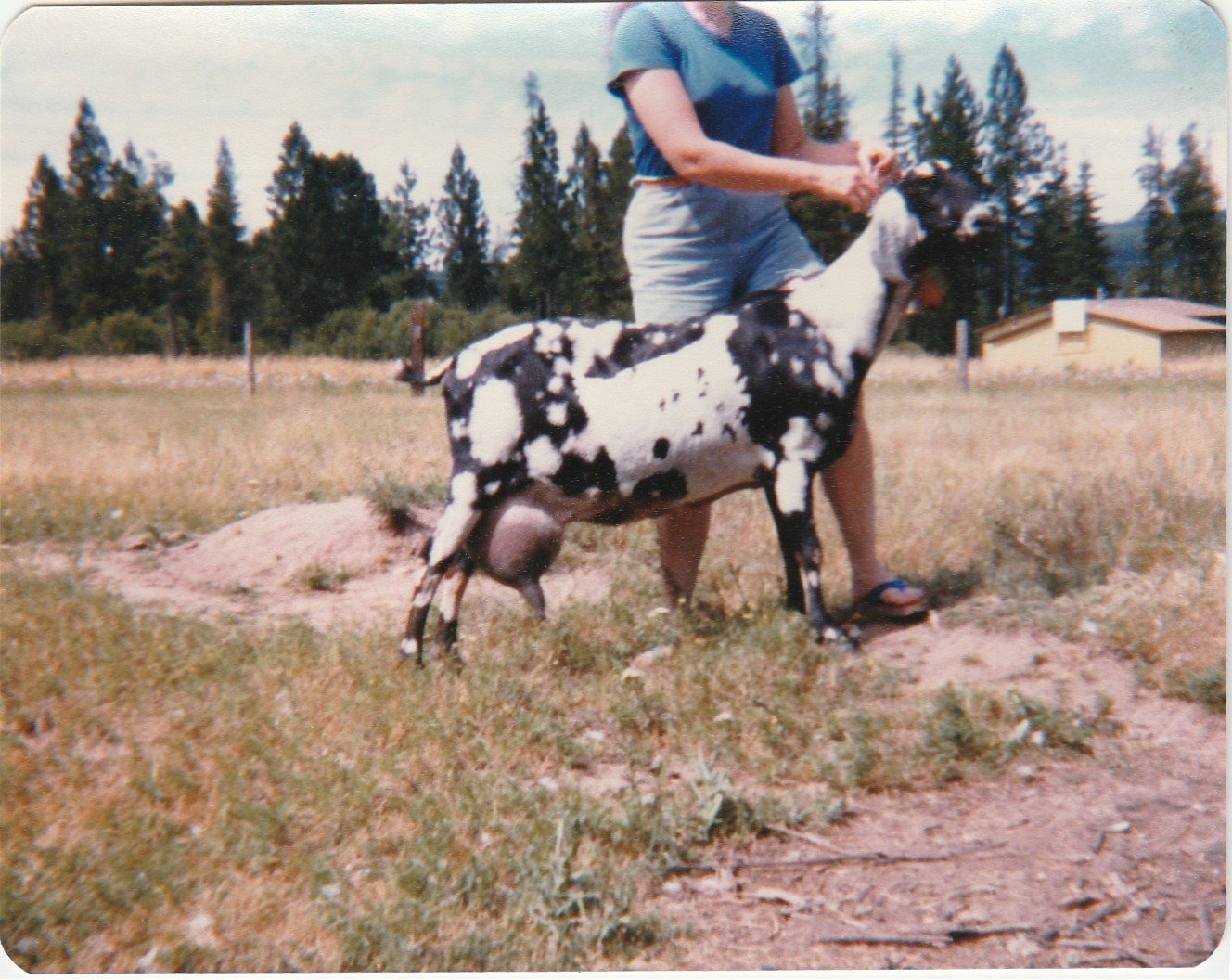
What can I say about Queenie? I adored this doe. Of course, she had her flaws, but she had one of those udders that people pray they will find once in a lifetime. Even Harvey Considine commented on her perfect foreudder attachment when he classified her after she earned one of her Championship legs in Meridian, Idaho. Queenie got me “into” showing (nothing beats having a winner), and she finished her Championship. We went on to buy her sire, *B Elm Hills Robert, from Otis Horn of Nyssa, Idaho, along with her dam Lilly Belle, and several of her sisters, including GCH Nyssa Lilly’s Glorie 1*M. One of Queenie’s daughters went to Karen Hermansen’s herd, too: Sheng Tai Luv’s Nealla 1*M, who gave Karen several does, including GCH Royal Cedars Nealla Nelina 2*M and Royal Cedars Charming Nyleen 2*M.
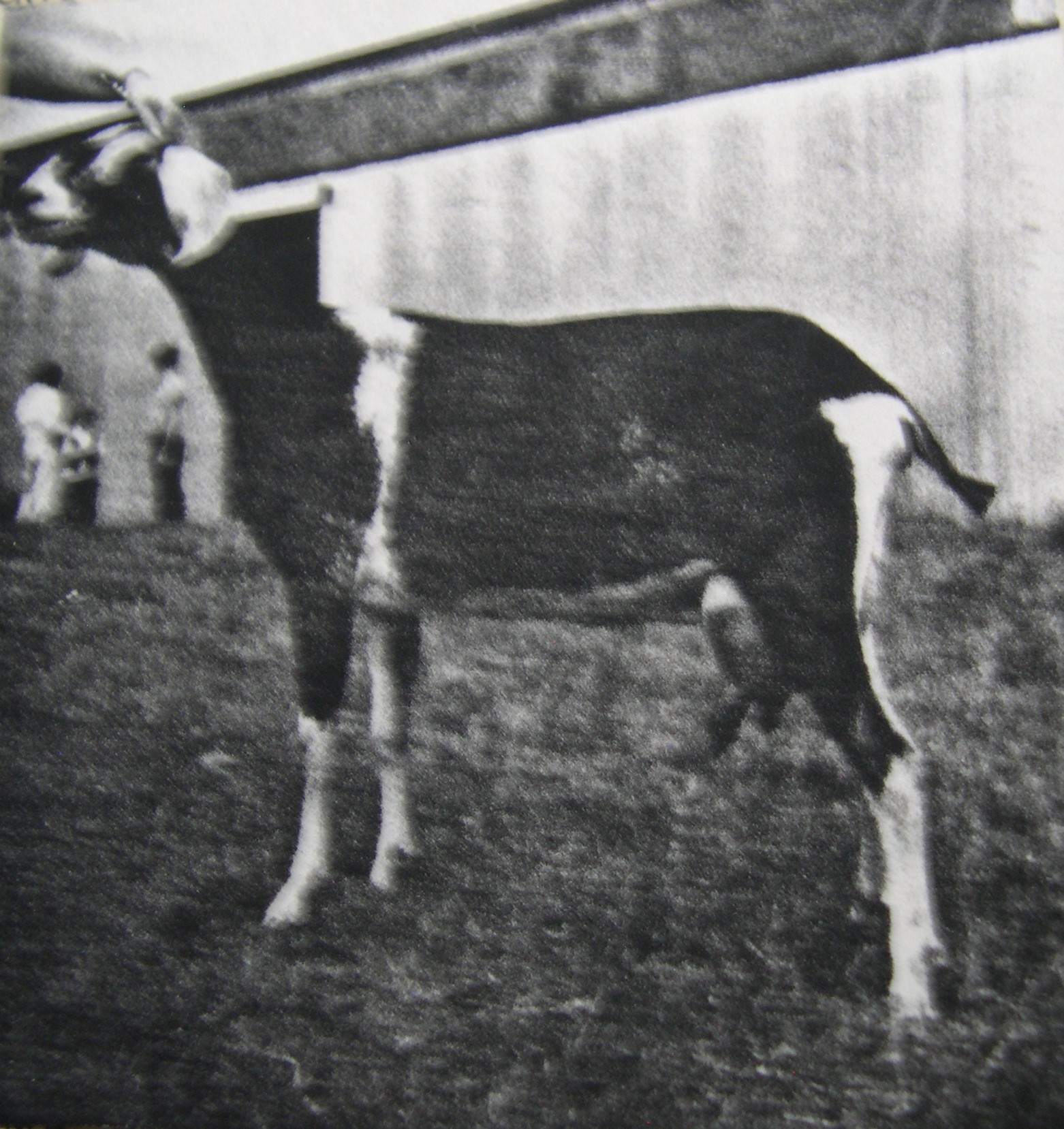
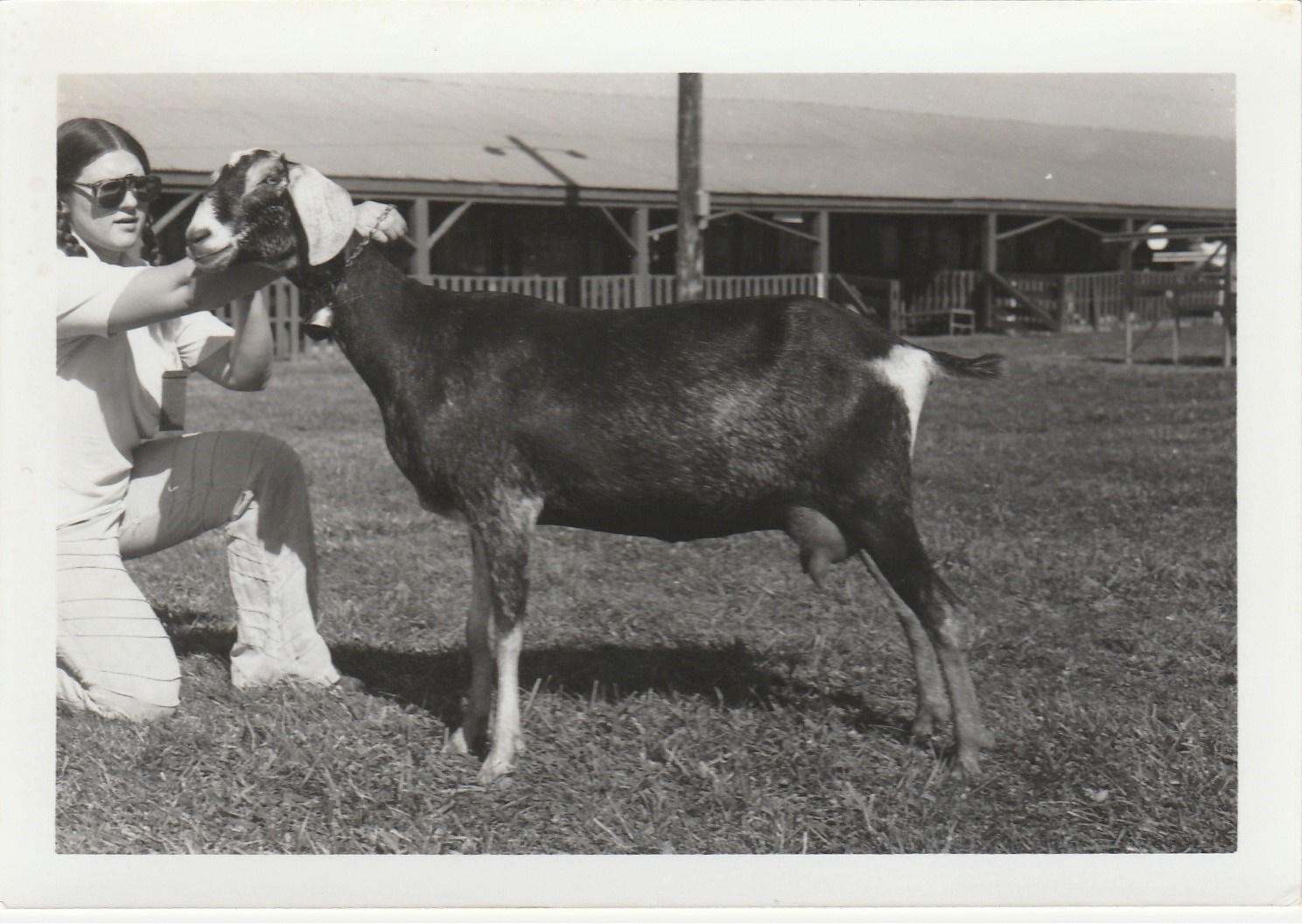
One of our accomplishments, while we lived in Summerville, was establishing the ADGA-sanctioned dairy goat show at the Union County Fair in La Grande, Oregon, which is still a going concern under the guidance of Stephanie Rovey. The first year, the Fair Board was skeptical, but they agreed to give us a chance, as long as we didn’t cause any problems or cost them any money. We used the same judge as the 4-H and FFA kids were using and were assigned pens in the Hog Barn. Sam and I did all the work associated with putting it on, including having activities for people and their kids to participate in (I Milked a Goat at the Fair, and a Wild Goat Milking Contest) We had loads of educational posters, and were able to persuade a number of people to come and show their goats. In the end, the goat show was a huge success, and the Fair Board was so pleased, they agreed to continue having the goat show, even agreeing to paying for an ADGA judge! Their feedback from the public said it was the most popular livestock event at the fair that year—and it’s still going strong, pulling exhibitors from all over the Northwest, including National Show winners.
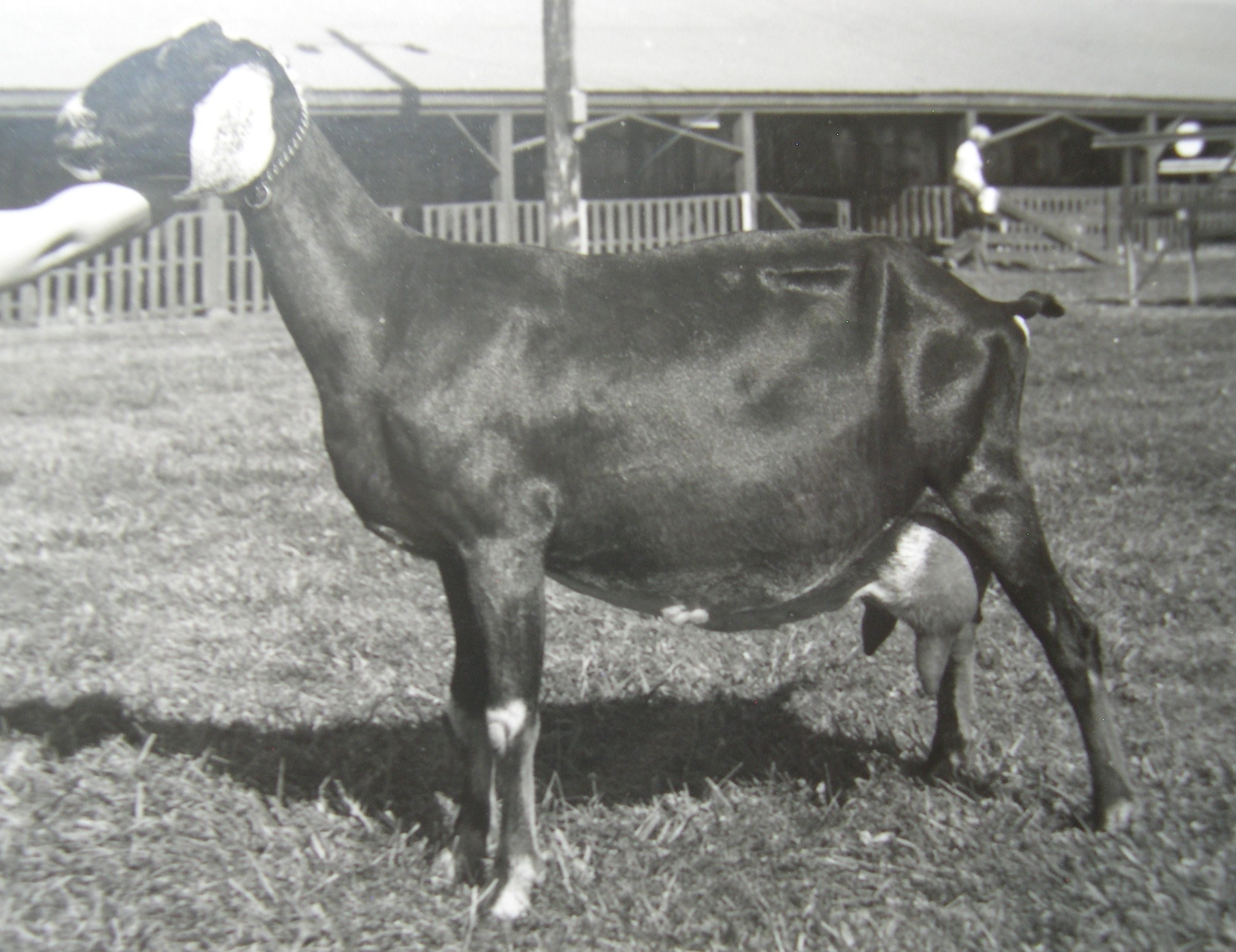
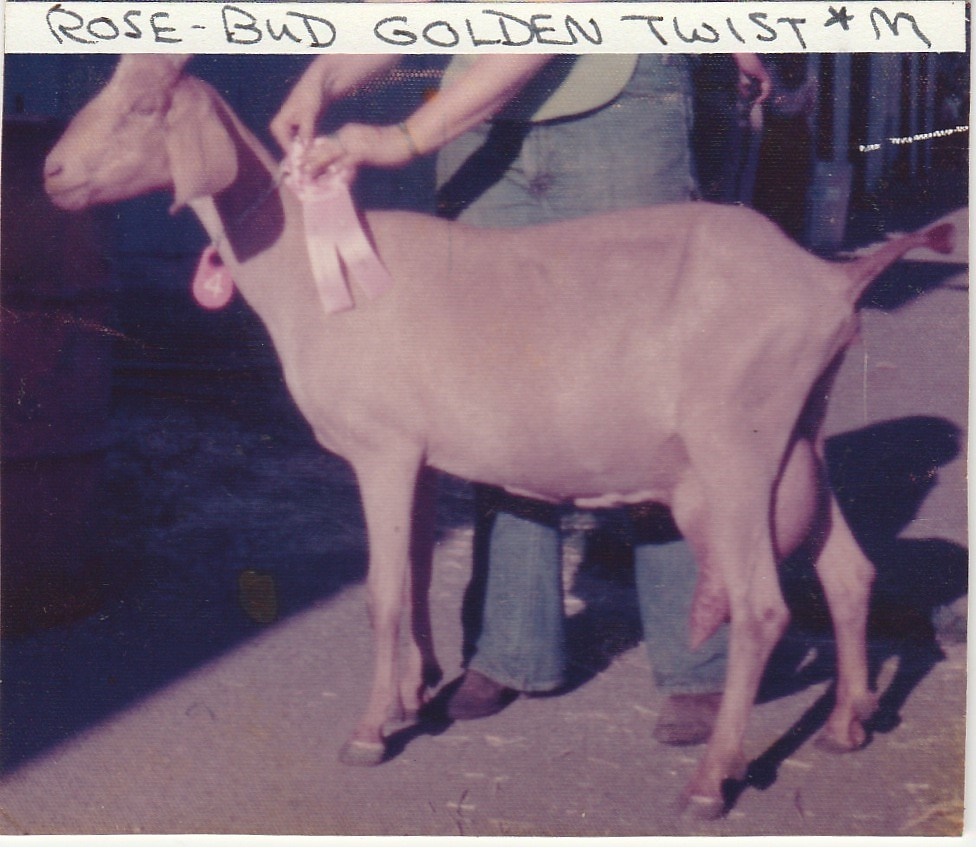
Well, I don’t want to get bogged down in a long story about the ups and downs of life on the farm at Summerville! Reality began to dawn as we headed toward winter. We were working full-time at our jobs at the hospital in town the entire time—a 25-mile drive every night (we worked graveyard shift)—and then trying to take care of our animals during the day. It wasn’t all bad, but lots of it wasn’t fun, and we ended up eventually going broke. You probably remember seeing the joke where an old farmer has just won a million dollars in the lottery, and a journalist, who’s come to interview him asks, “What are you going to do with all that money?” The farmer answers, “Well, I guess I’ll just keep on farming until it’s all gone.” We enjoyed the goats, or we wouldn’t have kept on with them, but this “joke” isn’t far from the truth, and there comes a time when you are forced to confront reality.
In 1981, we sold all our goats, our farm, and made a move to the Seattle area, where we lived for the next 32 years. Life in the city was very different, and while I tried to keep my hand in showing goats for a friend with Alpines, I had to finally give up on that entirely. We worked in several hospitals there during that time, gradually moving to the South Sound area (Kent East Hill). We eventually bought a few Arabian horses and were active in Equestrians Institute, a local English horse sport group, participating in dressage schooling shows and horse trials. I took riding lessons for many years from my dear friend Karin Bishop and was the Jump Judge Steward at the Mountain Meadows Horse Trial for several years, too. That was hard work but tremendous fun, and I accomplished one of my life goals: learning to ride English. I’m sure we would have had more money if we’d never had the horses, but even so I don’t regret having them. They were my first love and always will be.
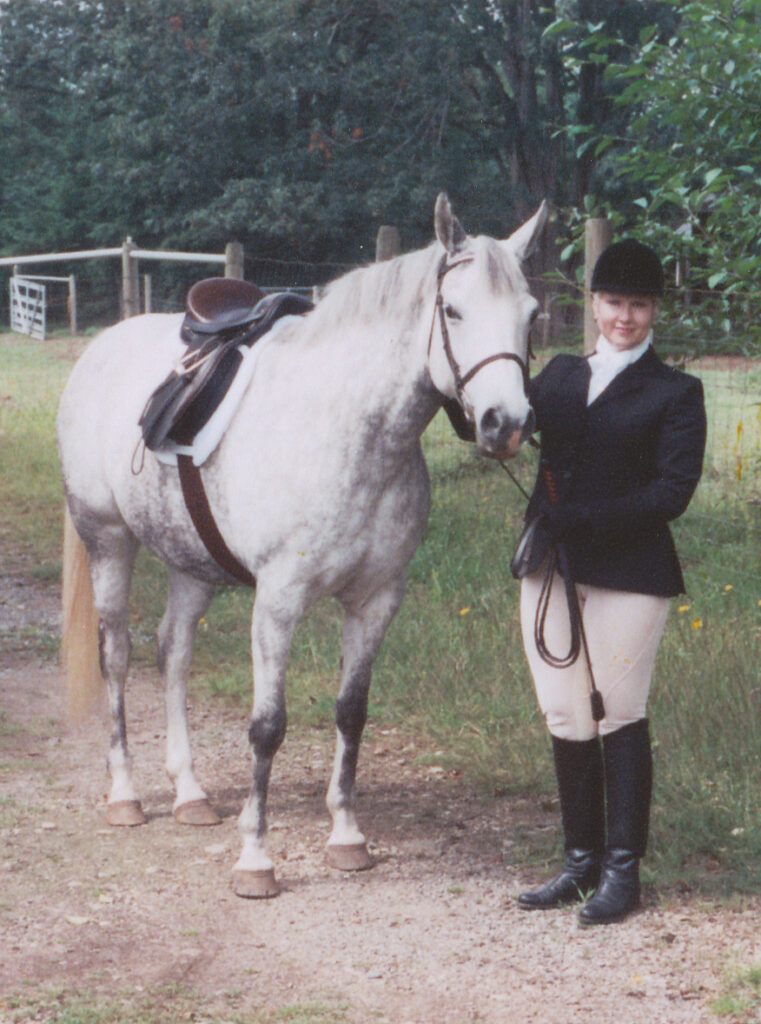
Finally, though, it was time to retire, so Sam and I moved back to Oregon to be closer to our families and the country we’d spent so much time hiking over the years. We wanted to buy a small acreage near La Grande, but yikes! Everything cost far more than we could afford. We looked at several little places and bought our present home near Imnaha after a brief search.
Here are a few of the wonderful animals we owned while we were in Summerville:
Rose-bud Golden Twist 1*M (AKA Goldie)[iv] Goldie was our herd queen and the best milker I had owned to that point. She was laid-back and diplomatic, but firm in her discipline–qualities that every good herd queen should have. She pumped out the milk, too! Her production raised the bar on what I considered acceptable. She earned her *M when we were on Group Test. LIFE 724 5460 4.9 268 0.0 0.
Millard’s Silver Bell 1*M [v](5-02 89/VEVV) LIFE 535 3520 4.9 173 0.0 0; 1978 INBA Reserve Aged All-American (tie). Bell was, like Queenie, one of my all-time favorites and one who became a template for what I looked for in a doe. Sadly, we never got a daughter from her, because she became cystic. Because of that, she was unable to finish her Championship, going Reserve when Queen earned her last Championship leg. My doe SG Imnaha King’s Silver Belle 2*M was named after her.
Lilly Bell[vi] was the dam of CH River Queen and GCH Nyssa Lilly’s Glorie 1*M, as well as Nyssa Millie, Nyssa June, and The Sweet Valley Cinnamon. She was also the littermate to Birdie.
*B Emerald Ebbtide’s Luverboy,[vii] whom we bought from the great and wonderful Betty Herrington, was the sire of Sheng Tai Luv’s Nealla 1*M.
*B Gasconade Tricia’s Tacitus[viii] sired a number of kids for us before he went on to sire many more in several other herds[ix]. His best daughters from our breeding were Sheng Tai GTT Tascela, Parusati, and Hildico.

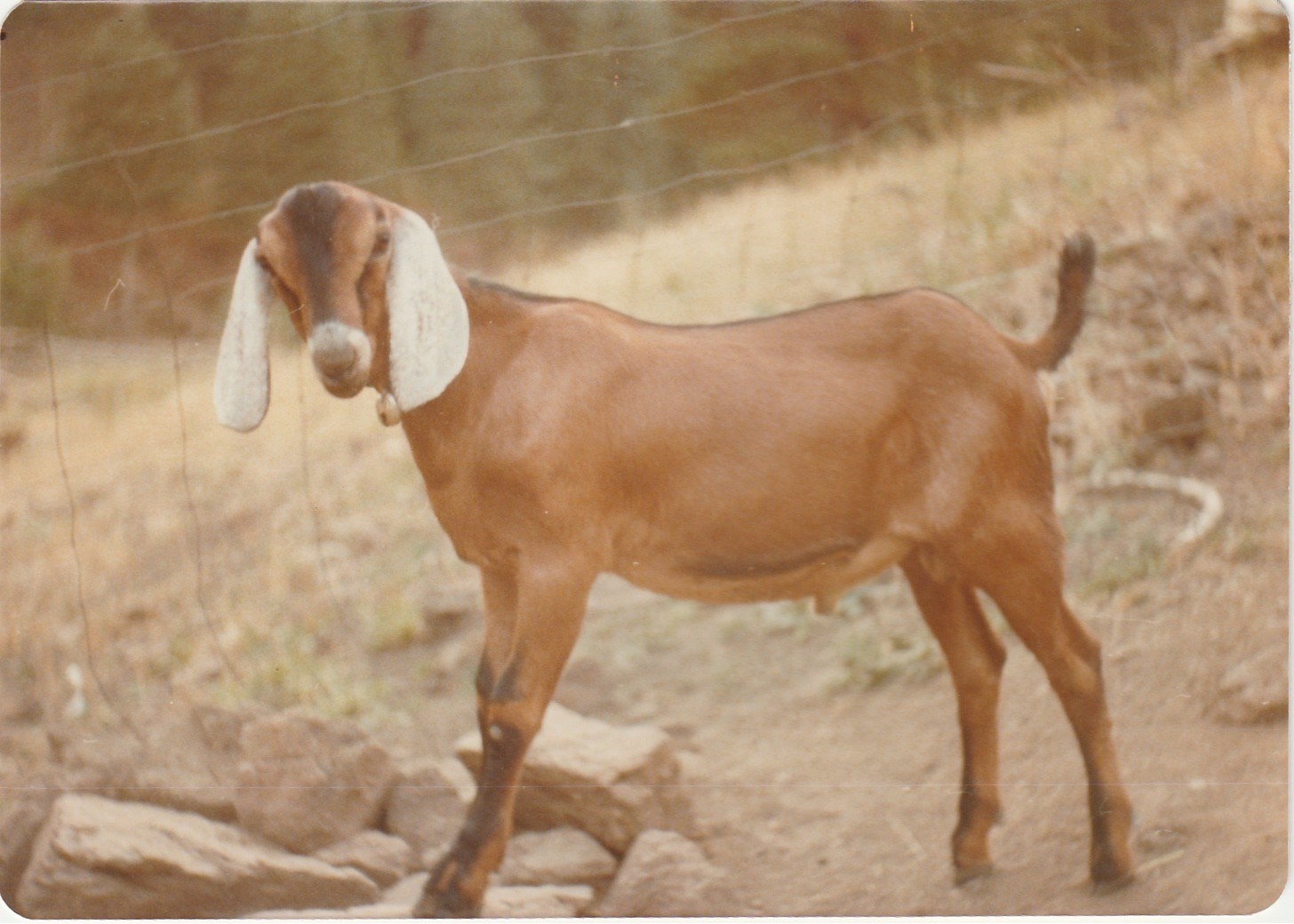
*B Elm Hills Robert[x] was Queen and Glorie’s sire, and we really tried to repeat the ‘golden nick” between him and Lilly Bell. It was not to be, however, which is how things often go.
+*B Longman’s Mindy’s Apollo[xi] was the last buck we bought before we finally had to sell out. I had been mooning over the Longman’s herd ads for years, especially over his dam Mindy, and in 1980 we finally “took the plunge” and reserved a kid. I remember driving to the Boise airport to pick him up—it was like a dream come true. He was so handsome and had so much potential. In the end, we sold him on a partnership to Linda Fink of Cottage Grove Oregon, where he sired does for her for several years.
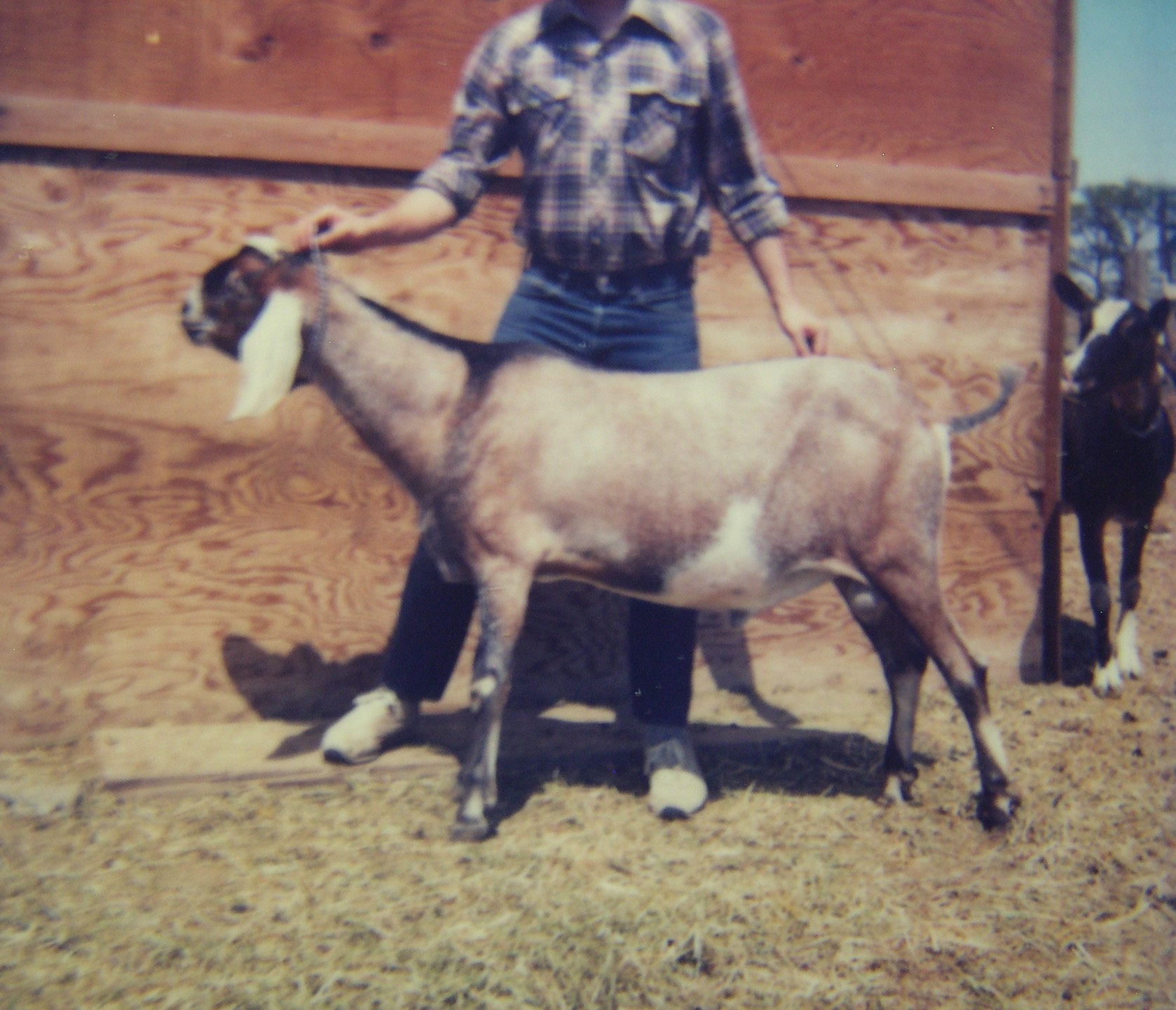
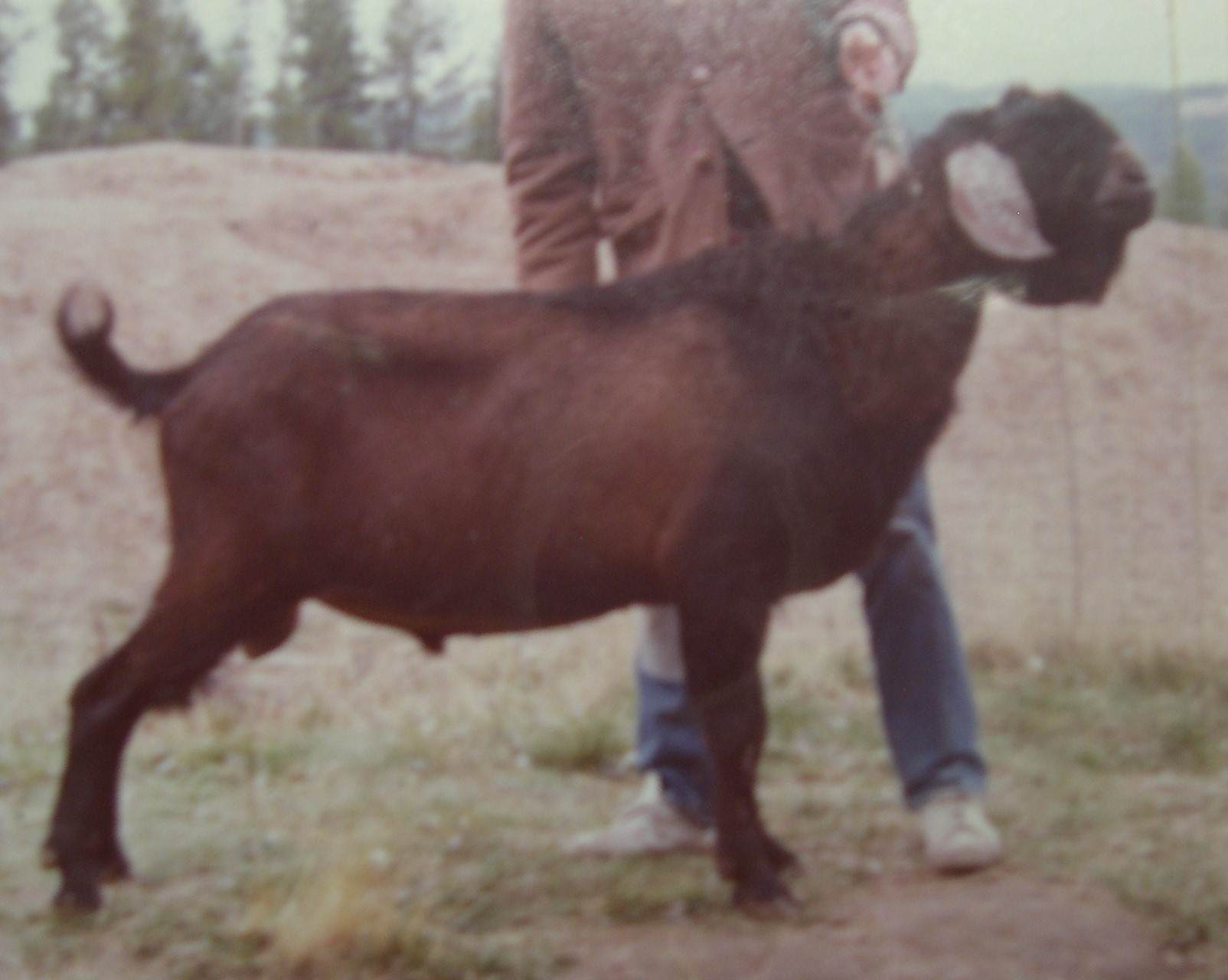
[i] https://www.adgagenetics.org/PedigreePrint.aspx?RegNumber=N000177053
[ii] https://www.adgagenetics.org/PedigreePrint.aspx?RegNumber=N000210699
[iii] https://www.adgagenetics.org/PedigreePrint.aspx?RegNumber=N000215030
[iv] https://www.adgagenetics.org/PedigreePrint.aspx?RegNumber=N000225422
[v] https://www.adgagenetics.org/PedigreePrint.aspx?RegNumber=N000210325
[vi] https://www.adgagenetics.org/PedigreePrint.aspx?RegNumber=N000196531
[vii] https://www.adgagenetics.org/PedigreePrint.aspx?RegNumber=N000269790
[viii] https://www.adgagenetics.org/PedigreePrint.aspx?RegNumber=N000294990
[ix] https://www.adgagenetics.org/GoatDetail.aspx?RegNumber=N000294990
[x] https://www.adgagenetics.org/PedigreePrint.aspx?RegNumber=N000201834
[xi] https://www.adgagenetics.org/PedigreePrint.aspx?RegNumber=N000379273
IMNAHA NUBIANS
When Sam and I retired at the end of 2013 and moved back to Northeastern Oregon (this time to our little fam near Imnaha) we were not thinking of getting back into goats again. Chickens, yes, and garden yes, but we were focused on enjoying our retirement—especially on continuing to hike and camp as we’d done every summer for some years in the Eagle Cap Wilderness Area. I brought my horses with me and intended to do lots of riding, too. Horses and riding have been a huge part of my life, and I had even bought a couple new horses, since Hadarah (my Arabian mare that I’d had since she was a baby) was getting quite old. I bought my dream horse for retirement, Laddie, a registered Friesian-cross sport horse gelding, plus Schelline, a Quarter-Horse mare. Both were trained trail horses, in fact, Laddie had been an outfitter’s mount before I bought him. Schelline was trained to be a bombproof, hunting and packing horse. Well, great plans oft go astray, as the saying goes. I’ve had bad knees for many years (I got a total right knee replacement in 2007), and one of the first things I did after moving here was take a fall and wrench my left knee! So much for that plan.
Then, too, we aimed to live more sustainably on our new farm and having a large garden and a flock of chickens got us started. I began thinking about getting goats again to provide what else we would need (milk, cheese, and meat). We had been completely out of the goat scene for over 30 years, however, and I had no idea what was available or where to start. Let’s face it—I am very picky, too! Once you’ve had top-quality does that really milk, you just aren’t willing to settle for less. In addition, in the ‘70’s and ‘80’s when we had goats the first time, and like many other people, we went through the wringer with the disastrous emergence of CAE and Caseous lymphadenitis. Back then, there was no way to know if you had it, until you saw symptoms, no way to know where it had come from, or any way to get rid of it. I had no intention of unknowingly bringing any of that into my new herd again. Fortunately, the intervening years saw tests and treatment plans become available to deal with these diseases, so every animal we bought had several negative tests for CAE, Caseous Lymphadenitis, and Johnes’, plus they all came from negative herds.
Early in 2014 I began searching for some new goats, and like many people, I started with Craigslist. I couldn’t have been more fortunate than to find exactly what I was looking for: an ad from Tiffany LeGore of Pendleton, OR for a lovely milking Nubian doe with her kids and their sire. The only problem was they were a couple hundred miles away! Since we had chosen to live in “the boonies,” we had no alternative but to just drive the miles. The goats were perfect. Even though I had been out of goats for many years, I still knew good goats and pedigrees when I saw them, so I was happy to buy them.
The real prize, though I didn’t realize it at the time, was the yearling buck who had sired the kids we bought: *B Woest-Hoeve Kingfisher[i]. He was a handsome boy, but what really impressed me when I first saw him, was the steady and intelligent look he had. He was a good-tempered boy, too, and not a goofball, which was a real plus! We weren’t thinking about getting a buck at that point, so we only bought the doe (Vernay Ace Bethany[ii]) and her two doe kids (Blue Mantle Bella[iii] and Blue Mantle Queen[iv]). The black and white one had already been christened Bella and the brown one was called Parsley. I immediately changed Parsley’s name to Queen, which I suppose seemed a bit comical to her breeder, but she reminded me of my dear River Queen from years ago. I’ve always been a fan of giving animals names to live up to.

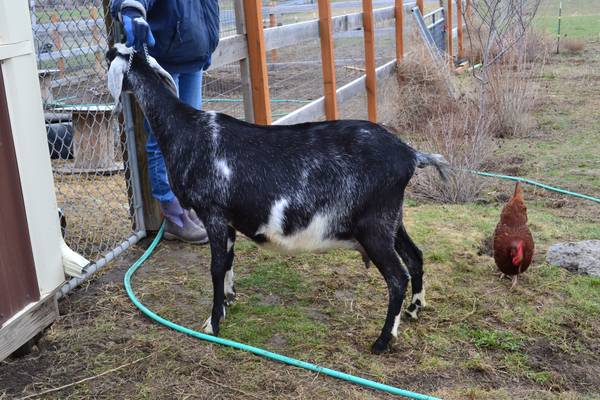
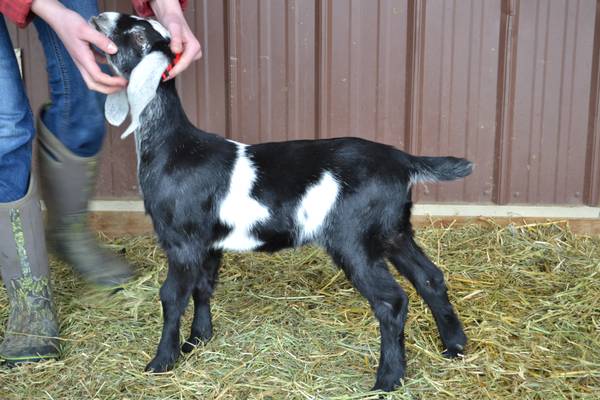
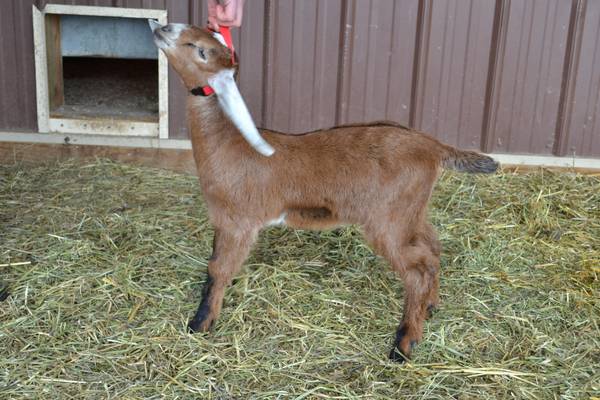
Above 4 photos, courtesy of Tiffany LeGore, Pendleton, Oregon
Of course, we no sooner got home with the doe and kids than we realized we needed the buck, too, so Sam went back to get him. It would be another year before we’d be able to milk those kids, too, so we needed at least one more mature milker. Back to Craigslist, where I saw an ad from Royal Highlands near Spokane, WA. A visit to their Website showed they indeed had a milking doe for sale that we liked: SG Bedouin Cherry 1*M[v], so I called and arranged to drive up the following weekend. We bought Cherry plus her milking daughter SG Royal Highlands Blueberry[vi]. A couple weeks later, Sam drove to Ellensburg, WA to pick up some sheep I’d bought and, on the way home, he picked up another doe at Royal Highlands, a 7/8 sister to Cherry: SG Bedouin Lady Victory 10*M[vii]. Over the next couple months, we bought several other does, but we no longer have any of their offspring in our herd, so I won’t dwell on them here. By the time we’d rounded up our menagerie, we had 4 horses, a dozen Silver-laced Wyandotte chicks, 6 Nubian does (two were dry yearlings), 2 doe kids, a Nubian buck, and a small flock of Border Leicester and Gotland/Shetland-cross sheep, including a ram! Yikes!
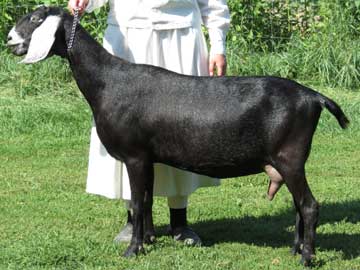
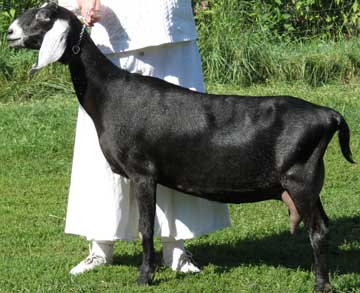
Above photos, courtesy of Royal Highlands Dairy Goats
The chicks grew up, and we kept the hens and one rooster. The sheep, though, as much as we liked them, did not work out. I had the romantic idea of learning to spin wool into yarn, using fleece from my own sheep—and their fleeces were lovely. I didn’t know how to shear them, though and over the course of the summer, they totally denuded the place except for the trees. We also realized we had bought too many goats. We sold the sheep and kept the goats we wanted, with a couple of the does going to the Grande Ronde Dairy near La Grande, Oregon.
At last our new herd was ready! We had considered using our old herd name again (Sheng Tai), since it was available, but the goats we had weren’t related to any of the ones we’d had before. We also lived in a different location, so we decided to apply for a new herd name, one identified with where we are now, so IMNAHA NUBIANS was born.
Here is a list of the foundation animals we retained:
SG +*B Woest-Hoeve Kingfisher [LA: 4-03 90/EVE; ELITE in 2017; 2017 INBA Outstanding Sire Award]
I absolutely loved this guy, and he was the best buck we have ever had, before or since. I wish we’d had more does and better ones, to use with him, but as the saying goes, “You go to war with the army you have, not the army you want.”[viii] All the same, he gave us some wonderful daughters: Blue Mantle Bella 1*M; Blue Mantle Queen 1*M; SG Imnaha King’s Silver Belle 2*M (LA: 2-04 87/VEE+);SG Imnaha King’s Lady Jane 11*M (LA: 2-04 88/VEEV); SG Imnaha King’s Lady Anne 11*M (LA: 3-05 88/VVEV); and SG Imnaha King’s Lady Charlotte 11*M (LA: 3-05 90/VEEE). Each one of these does has an outstanding milk record, and all of them earned Merit production awards from the INBA.
SG Bedouin Cherry 1*M (LA: 3-05 89/VEEV) 2-00 304 1880 4.3 80 3.5 66 – –
3-00 207 1820 4.3 78 3.4 61
LIFE 511 3700 4.3 158 3.4 127
One of my favorite does and the dam of SG Imnaha King’s Silver Belle 2*M. Cherry wasn’t with us long (she had quads her first kidding with us; she subsequently suffered a uterine tear and succumbed to an infection arising from that), but her daughter Silver Belle was Kingfisher’s best daughter, in terms of milking ability. We have her grand-and great granddaughters in our herd: Imnaha AM Dark Crystal 3*M and her daughter (sired by *B Grande Ronde FT Top Gear) Imnaha TG Bella Donna.
SG Bedouin Lady Victory 10*M (LA: 2-07 85/VVV+) 1-11 305 1500 6.2 93 4.5 68
4-01 41 310 5.8 18 4.2 13
6-00 211 1270 5.7 72 3.8 48
LIFE 557 3080 5.9 183 4.2 129
A 7/8 sister to Cherry and the dam of the main doe line still in our herd. A good, solid doe whose daughters were all better than she was, but that’s so hard to find! We still have her daughters Anne and Charlotte in our herd, though Anne is now retired, due to a uterine tear her last kidding. We also have a couple granddaughters Chloe and Calliope, out of Charlotte’s daughter, SG Imnaha AM Lady Carla 12*M (rated at the 93rd. percentile in 2019), plus Charlotte’s daughters Cassiopeia and Cleopatra—all four are sired by *B Grande Ronde FT Top Gear.
Vernay Ace Bethany (LA: 4-02 85/VV+V)
A line bred Wingwood doe and a prodigious milker! We weren’t on DHIA test yet, so she unable to earn her *M while here, but both of her daughters (Bella and Queen) did. Bethany left our herd and went to California as a replacement for her dam Zelda.
Blue Mantle Bella 1*M (1-11 304 3150 4.9 154 3.7 118)
Kingfisher’s oldest daughter out of Vernay Ace Bethany. We were on the first year of Owner/Sampler when Bella earned this record, and unfortunately, we didn’t know that meant no genetic evaluation for our animals (i.e. no evaluation for Superior Genetics). That was the only year Bella was on test, and her production would’ve qualified her for Top 10, IF we’d been on Standard Test. Also disappointing was the fact that in three kiddings, she had nothing but buck kids, and then she foundered. We have nothing in our herd from Bella today.
Blue Mantle Queen 1*M (1-10 304 2770 4.4 122 3.5 97
2-10 278 1900 4.6 88 3.7 70
LIFE 582 4670 4.5 210 3.6 167
Queenie was Bella’s littermate. She milked well and had one of the nicest udders in our herd at that time. Queenie was the dam of SG Imnaha GRD Rosie O’Grady 2*M, whose daughter Imnaha AM Bailey’s Irish Cream 3*M is still in our herd and expecting kids sired by *B Grande Ronde FT Top Gear. Fabulous udders and outstanding production are the earmarks of this doe line, though they aren’t show does.
Trying to run a quality breeding program while living in the extreme corner of Northeast Oregon has proved to be tough. First, it’s a long way from anywhere, so showing is nearly impossible. If we were younger and had more income, plus more help, we might consider it, but it’s a lot for two older folks to handle all on their own. Despite that, we do try to attend the Union County Fair in La Grande, OR every year. It’s harder to sell animals because of the distances, because it’s more difficult for people to drive to your location, and shipping kids is practically impossible, due to the distance to an airport. Second, this ain’t goat country. It is COW COUNTRY, specifically beef cow country. Even most of the goats that are in the area are meat breeds (Boer, Kiko, and crossbreds). I was once asked during a visit to the feed store what I wanted dairy goats for? Um, because I LIKE them? Third, Oregon State regulations make it nearly impossible to sell anything. I tried selling goat’s milk, but buyers must drive here to pick it up, so that’s an obstacle. Most people are interested in goat cheese, but I can’t legally sell that. I could sell meat goats directly to buyers at the farm, or if I wanted to haul them to the sale yard, which is a drive of 100-150 miles one way. Likewise, few in our immediate locale are interested in purebred, registered dairy goat stock. Lastly, it’s been tough to run a breeding program, because (being retired and with no employees) we can’t afford to manage a large herd. You must have animals to sell, or it isn’t worth advertising, and if you don’t advertise, nobody knows you exist. Living out in the boonies as we do discourages buyers—unless they are in Mexico or the Philippines—and then it doesn’t seem to matter where you live.
[i] https://www.adgagenetics.org/PedigreePrint.aspx?RegNumber=N001632008
[ii] https://www.adgagenetics.org/PedigreePrint.aspx?RegNumber=N001568784
[iii] https://www.adgagenetics.org/PedigreePrint.aspx?RegNumber=N001693143
[iv] https://www.adgagenetics.org/PedigreePrint.aspx?RegNumber=N001693144
[v] https://www.adgagenetics.org/PedigreePrint.aspx?RegNumber=N001500984
[vi] https://www.adgagenetics.org/PedigreePrint.aspx?RegNumber=N001567502
[vii] https://www.adgagenetics.org/PedigreePrint.aspx?RegNumber=N001506004
[viii] https://www.goodreads.com/quotes/1215538-you-go-to-war-with-the-army-you-have-not
